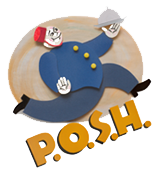1886 Silverplate Fish Service in Case
1886 Silverplate Fish Service in Case
$795.00
Strictly one-of-a-kind and subject to prior sale. Fish Knives measure 9" and Fish Forks measure 8" in length. Overall box dimensions are 14" x 10.5" x 3". In excellent antique condition.
Learn More About Fish Cutlery
Specific cutlery for eating fish evolved in the early 19th century. In 1838 a book of etiquette noted that, 'in first rate society, silver knives are now beginning to be used for fish: a very pleasing, as well as decided step in the progress of refinement.' People no longer used steel knives and forks, as the steel was said to react with acids in the fish sauces and taint the flavor of the food. Fish knives and forks were commonly called 'fish eaters' or 'fish-eating knives and forks'.
The complicated dining etiquette of the Victorian era encouraged the development of specific utensils for eating particular foods. The proper use of cutlery formed an important and often lengthy section in all the etiquette manuals. As the century progressed, the rules for the use of some cutlery changed, reflecting the refinements that began to differentiate the manners and status of 'old' and 'new' money. The development of fish eaters is a good example of this. Even until the 1880s, most etiquette manuals recommended that fish be eaten using two ordinary table forks or one fork and a piece of bread. As 'fish eaters' became en vogue during the mid 1800s, middle-class families bought the newly developed utensils, as a means to display their disposable income and demonstrate their place in society.
Fish knives and forks that matched the traditional table cutlery pattern did not become popular until the late 19th century. Earlier fish knives and forks had been made with elaborately engraved blades with rare handles of ivory, mother-of-pearl or later ivorine.


























